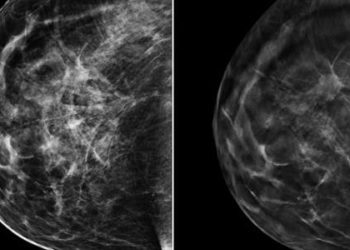2 Minute Medicine Rewind April 19 – April 26, 2015
In this section, we highlight the key high-impact studies, updates, and analyses published in medicine during the past week.
Pembrolizumab versus Ipilimumab in Advanced Melanoma
Ipilimumab, an immunomodulator that blocks cytotoxic T-lymphocyte associated protein 4, is often the drug of choice for advanced stage melanoma, however has significant immune-related side effects. Pembrolizumab is an monoclonal antibody to programmed cell death 1 immune checkpoint inhibitor. In this randomized, controlled, phase 3 study, researchers looked at the progression free and overall survival of patients over the age of 18 with stage 3 or 4 melanoma randomized to different treatment schedules of pembrolizumab or ipilimumab. A total of 834 patients from 16 different countries were enrolled in the study; 279 patients were assigned to receive pembrolizumab every 2 weeks, 277 to receive pembrolizumab every 3 weeks; and 278 to receive ipilimumab. Progression free survival was found to be 5.5 months for patients receiving pembrolizumab every 2 weeks (95% CI: 3.4 to 6.9), 4.1 months for patients receiving pembrolizumab every 3 weeks (95% CI: 2.9 to 6.9), and 2.8 months for patients receiving ipilimumab (95% CI: 2.8 to 2.9). One-year estimates of survival were 74.1% for patients receiving pembrolizumab every 2 weeks (HR for death compared to the ipilimumab group, 0.63; 95% CI: 0.47 to 0.83; p < 0.0005), 68.4% for patients receiving pembrolizumab every 3 weeks (HR for death compared to the ipilimumab group, 0.69; 95% CI: 0.52 to 0.90; p = 0.0036), and 58.2% for patients receiving ipilimumab. Pembrolizumab was found to have a better overall progression free survival period and a better overall survival rate when compared to ipilimumab.
Thyroid Function Within the Normal Range and Risk of Coronary Heart Disease
Thyroid dysfunction is known to be associated with tachyarrhythmias and heart failure. Some evidence suggests that thyroid dysfunction is linked to the rapid progression of coronary artery disease. In this study, researchers explored whether thyrotropin levels in the upper range of normal may also be associated with increased rates of coronary heart disease (CHD) related mortality and/or increased CHD events. This study was an observational meta-analysis that looked at individual participant data analysis of 14 cohorts. 55,412 individuals with thyrotropin levels ranging from 0.45 to 4.49 mIU/L, participated in the study. Following adjustment for age, sex, and smoking status, there was no significant association between thyrotropin levels and CHD mortality (adjusted HR 0.97; 95% CI 0.90 to 1.04) and/or CHD events (adjusted HR 1.00; 95% CI 0.97 to 1.03). Similarly, there was no significant difference between CHD mortality (adjusted HR 0.94; 95% CI, 0.74 to 1.20) and CHD events (adjusted HR 0.97; 95% CI, 0.83 to 1.13) when comparing individuals with high-normal thyrotropin levels (3.50 – 4.49 mIU/L) to those with low-normal thyrotropin levels (0.45 – 1.49 mIU/L). The results from this study suggest that higher thyrotropin levels within the normal range are not associated with increased risk of CHD.
Although there has been a significant amount of research into the benefits and harms of statin therapy in adults with dyslipidemia and cardiovascular disease, there is conflicting thoughts on the utility of statins for primary prevention in individuals over 75 years old without prior cardiovascular disease. In this forecasting study, researchers used a cardiovascular disease policy model to project the population impact and cost effectiveness of statin therapy in adults over the age of 75 with low-density lipoprotein (LDL) cholesterol levels of 4.91 mmol/L, 4.14 mmol/L, or 3.36 mmol/L. Primary outcome measures in this computer simulation were myocardial infarction (MI), coronary heart disease (CHD) related deaths, and disability-adjusted life years costs in adults aged 75-94 over a 10-year period. It was found that the treatment of adults 75 to 94 years old with statins would result in 8 million additional users and prevent 105,000 (4.3%) MI’s and 68,000 (2.3%) CHD deaths at an incremental cost per disability-adjusted life-year of $25,200. A major limitation of this study was that researchers only accounted for two of the many potential side effects of statin therapy and so, the potential functional limitations of statin therapy in this population was likely grossly underestimated. More research into the potential benefits and harms of statins in this population are needed to guide decision-making.
An simple female genital fistula, a connection that develops between either the rectum and vagina or between the bladder and vagina , and can occur after traumatic childbirth, sexually transmitted infections, radiation or Crohn’s disease. These fistulas often need surgical repair. The optimal length of bladder catheterizaiton after simple female genital fistula repair is uncertain and are significant differences in standard of practice. In this randomized controlled, open-label, non-inferiority trial, 524 patients were assigned to either, a 7 day bladder catheterization group (n = 261), or a 14 day bladder catheterization group (n = 263), to assess whether or not the incidence of fistula repair breakdown in women with a simple obstetric fistula varied with duration of bladder catheterization. It was found that 4% of patients in the 7-day group had fistula repair breakdown (95% CI, 2 to 8), compared to 3% of patients in the 14-day group (95% CI, 2.8 to 4.5). These findings suggest that 7-day bladder catheterization is non-inferior to 14-day catheterization and could safely be used for the management of women who had undergone repair of a simple obstetric fistula. Unfortunately, researchers only followed study participants for up to 3 months following surgery; future research in this area should assess whether or not duration of bladder catheterization has any long-term effects on repair breakdown, urinary retention or incontinence.
Effect of Oophorectomy on Survival After Breast Cancer in BRCA1 and BRCA2 Mutation Carriers
Women who carry a BRCA1 or BRCA2 mutation have a significantly increased lifetime risk of developing breast cancer (70%) and ovarian cancer. The risk of developing ovarian cancer in women with a BRCA mutation is as high as 46% for those with a BRCA1 mutation and up to 23% for those who carry a BRCA2 mutation. Given the high incidence of mortality associated with ovarian cancer as well as the increased risk of developing ovarian cancer in women with BRCA mutations, it is often recommended that women with BRCA mutations undergo a bilateral salpingo-oophorectomy. In this retrospective cohort study, researchers reviewed the charts of 676 women with stage 1 or 2 breast cancer and a documented BRCA1 or BRCA 2 mutation, to estimate the impact of oophorectomy on survival in women with breast cancer and a BRCA mutation. Of 676 women in the study, 345 underwent oophorectomy upon receiving the diagnosis of breast cancer; 331 did not undergo oophorectomy. It was found that women with a BRCA1 mutation who underwent oophorectomy experienced a significant decrease in mortality when compared to women who retained their ovaries (adjusted HR 0.38, 95% CI 0.19 to 0.77; p = 0.007). When the oophorectomy was performed within 2 years of breast cancer diagnosis in patients with a BRCA1 mutation, there was a larger and more significant decrease in mortality (HR 0.27, 95% CI 0.11 to 0.66; p = 0.004). There was no significant decrease in mortality in women with breast cancer and a BRCA2 mutation who had undergone oophorectomy (adjusted HR 0.57, 95% CI 0.23 to 1.43; p < 0.23). This study suggests that women who are diagnosed with breast cancer and have a BRCA1 mutation should undergo a bilateral oophorectomy shortly after receiving the diagnosis of breast cancer. Limitations of the study include those associated with retrospective design as well as the somewhat small population size. Future research in this area should focus on individuals with breast cancer and a BRCA2 mutation in order to ascertain whether or not the risk of development of ovarian cancer in this population is significant enough to warrant bilateral oophorectomy.
Image: PD
©2015 2 Minute Medicine, Inc. All rights reserved. No works may be reproduced without expressed written consent from 2 Minute Medicine, Inc. Inquire about licensing here. No article should be construed as medical advice and is not intended as such by the authors or by 2 Minute Medicine, Inc.





![PET scans in early-stage Hodgkin’s lymphoma may help guide therapy [RAPID trial]](https://www.2minutemedicine.com/wp-content/uploads/2015/04/1280px-Hodgkin_lymphoma_cytology_large-75x75.jpg)

